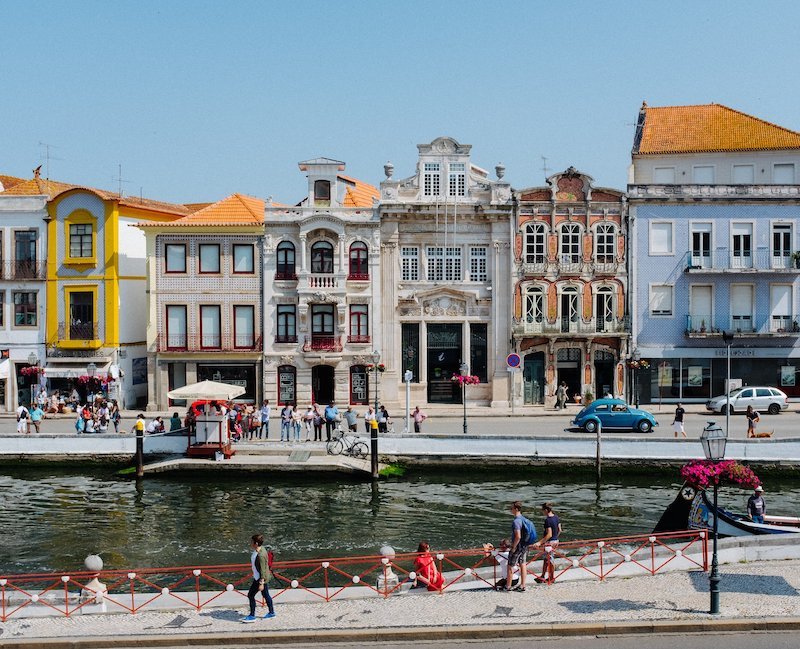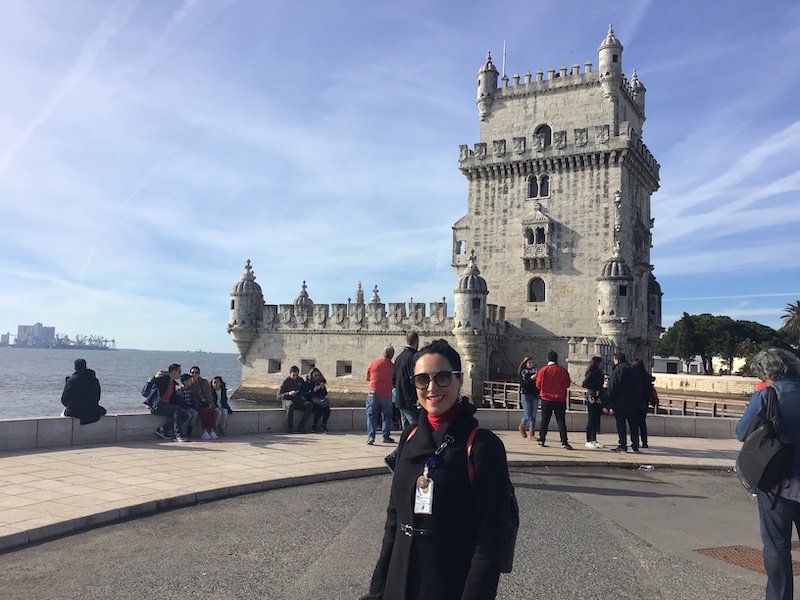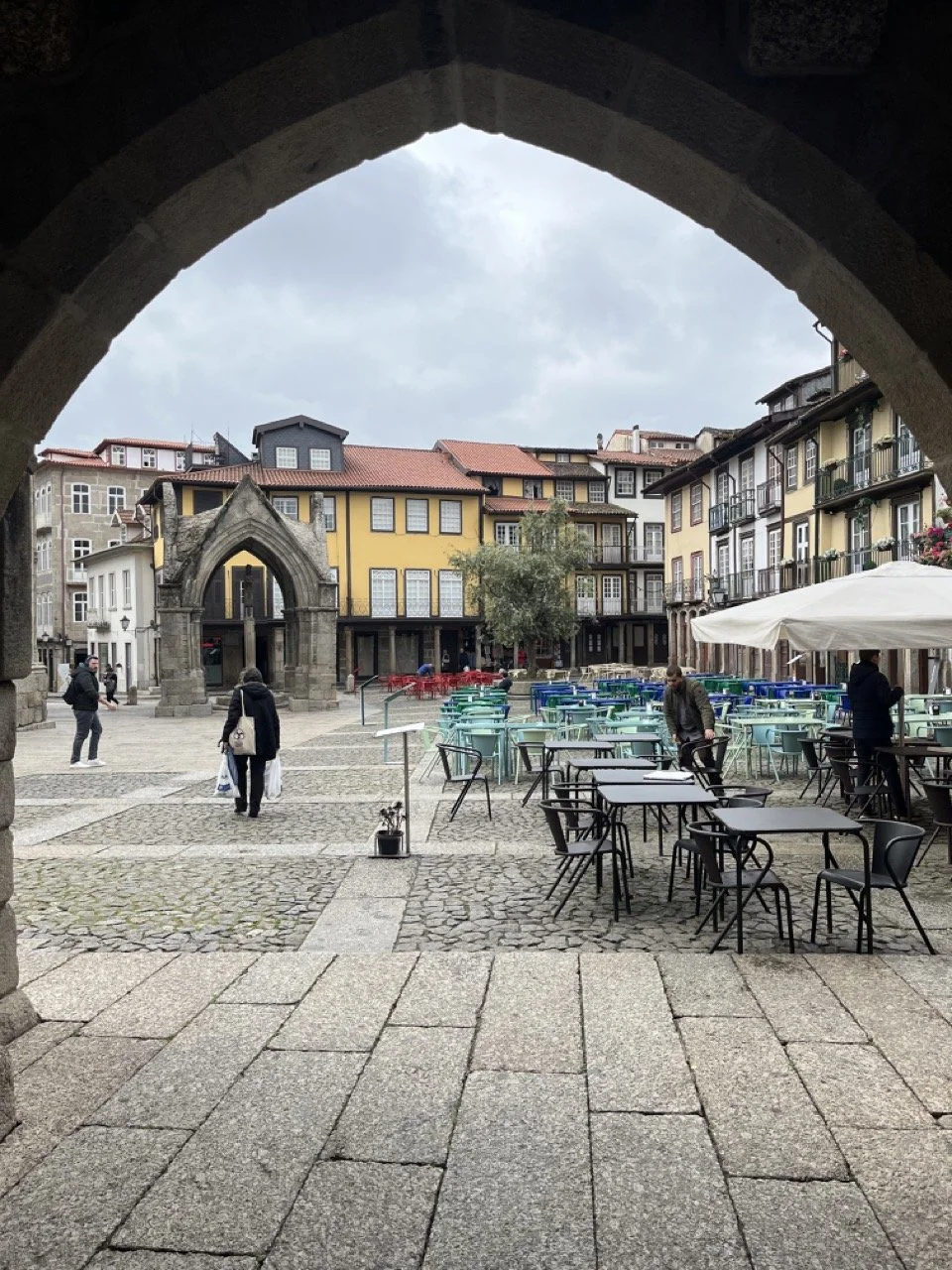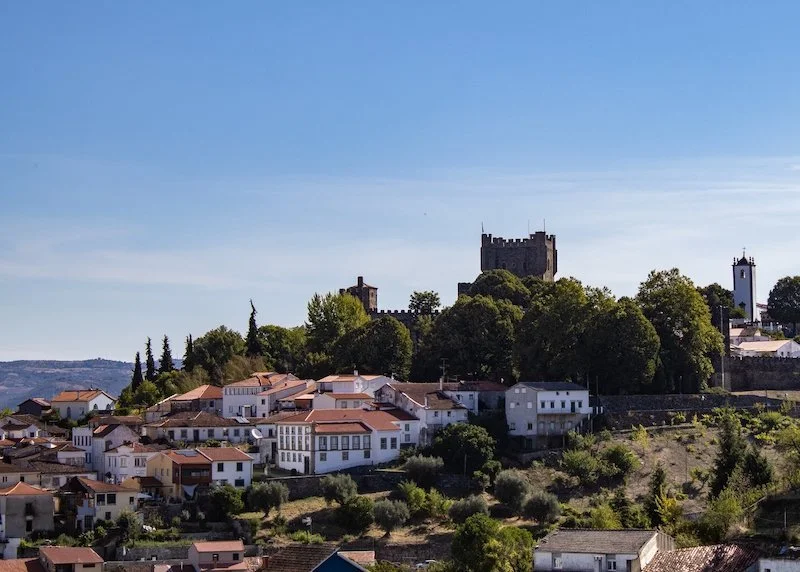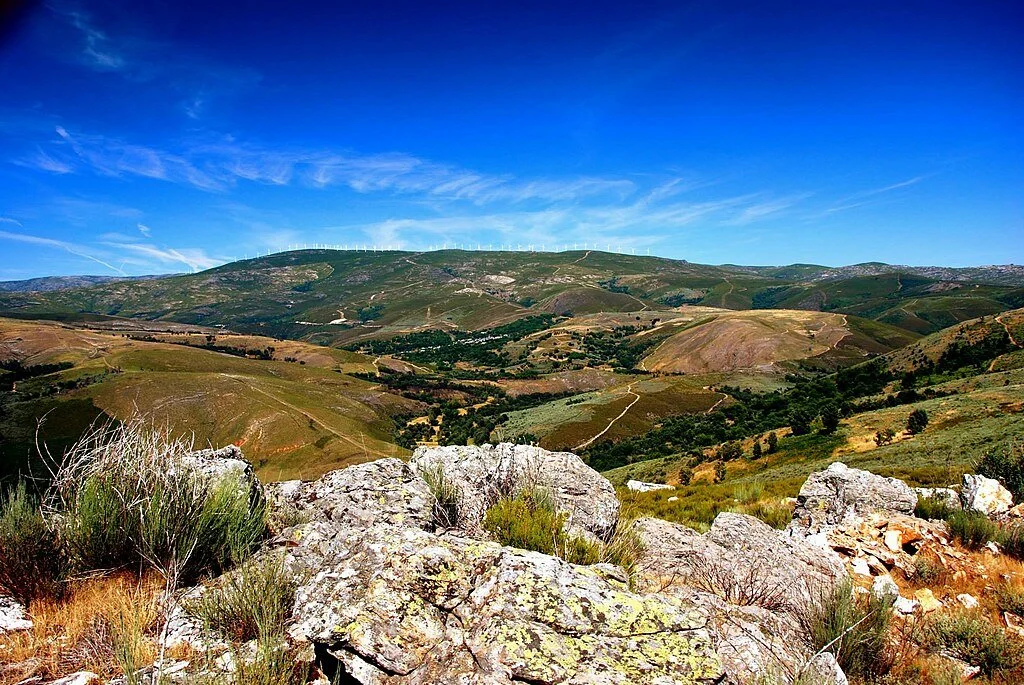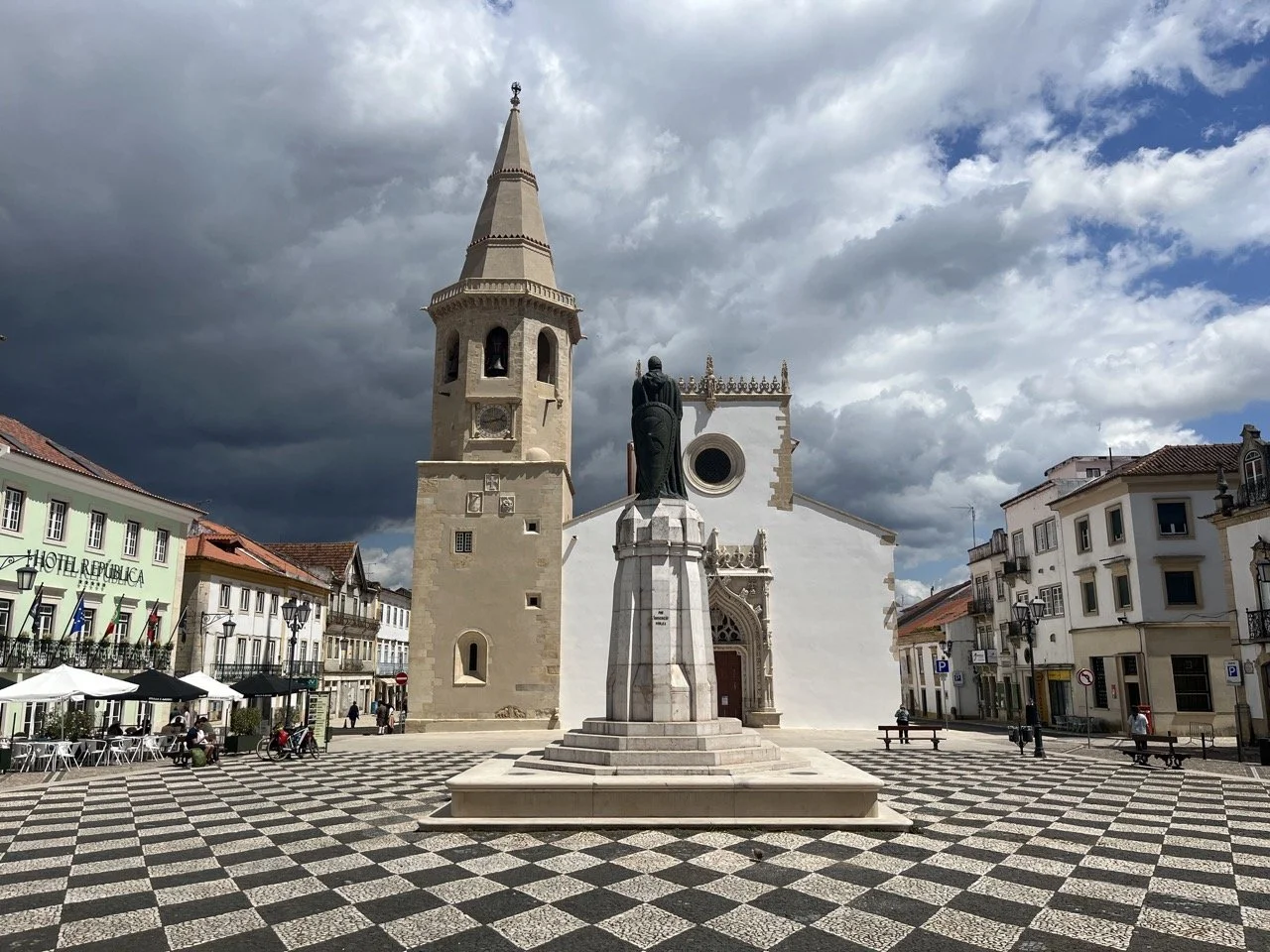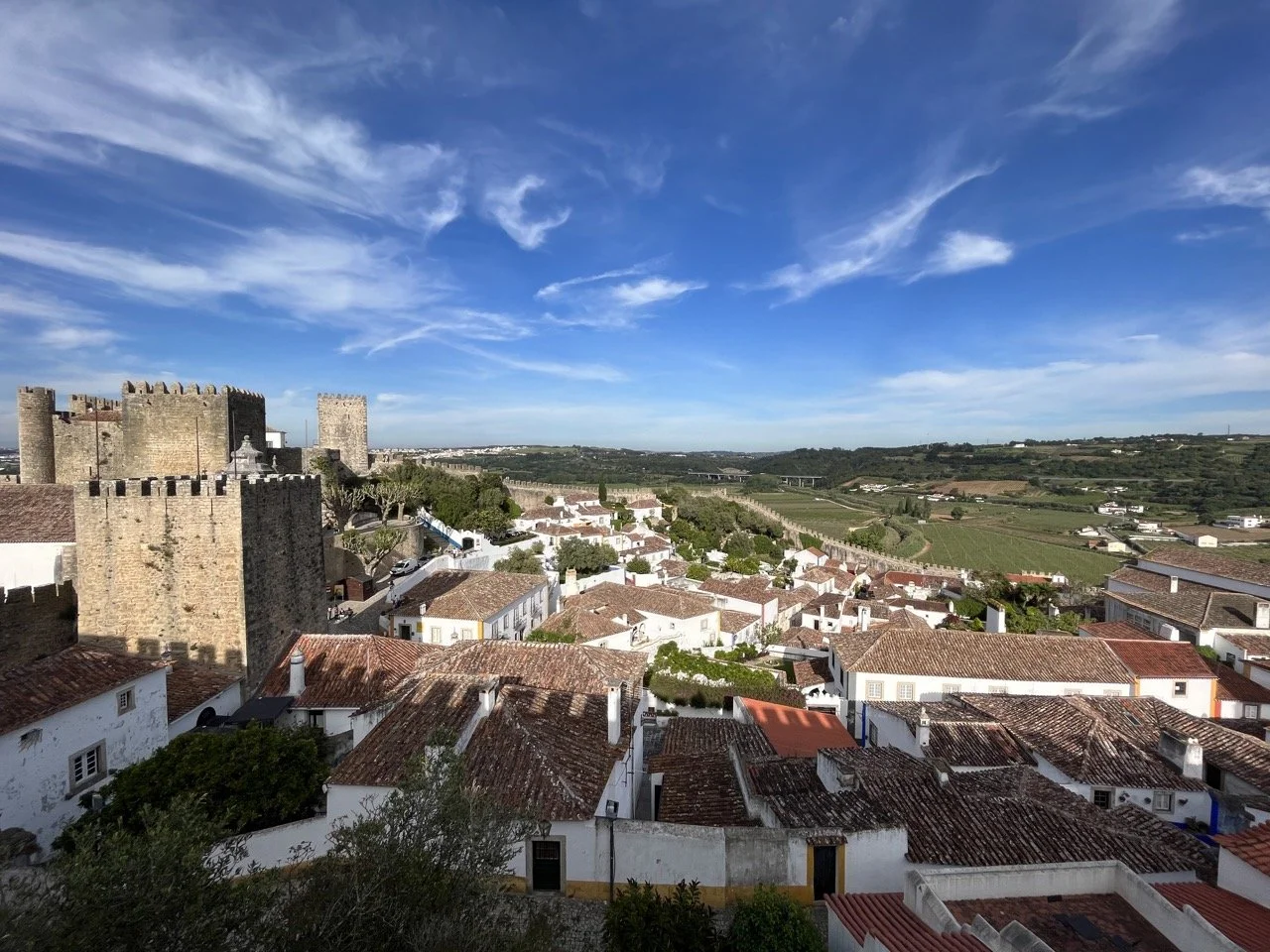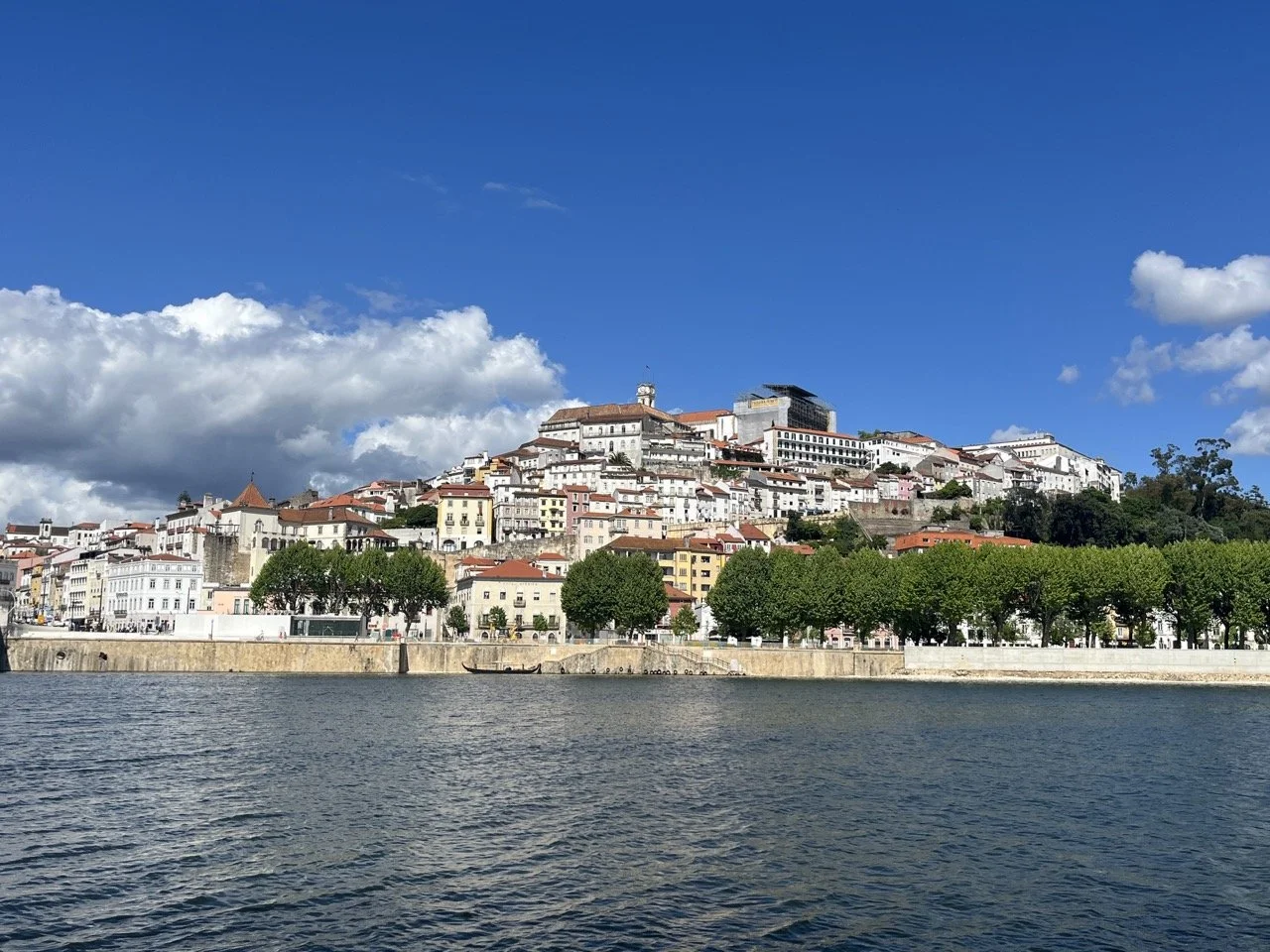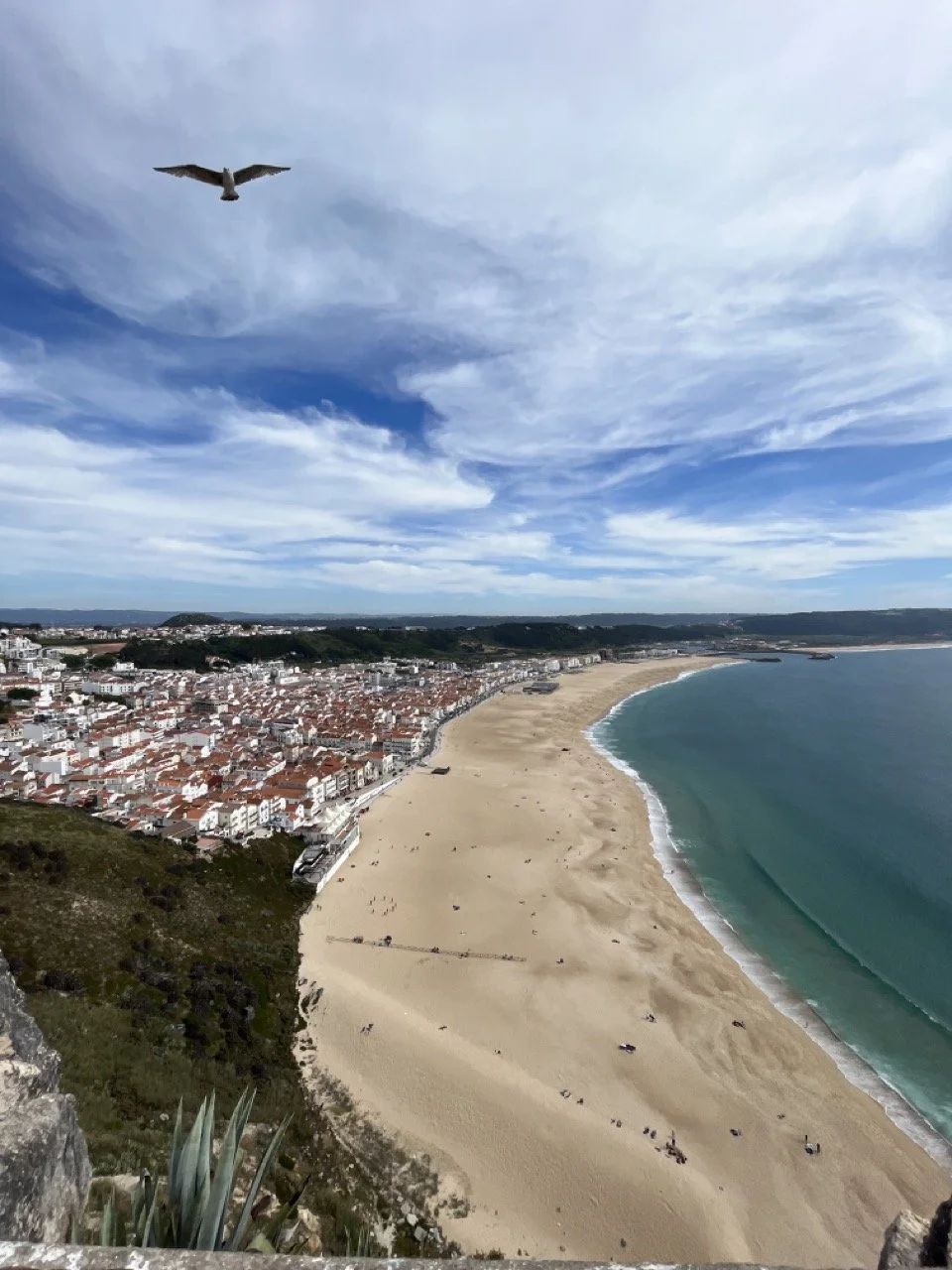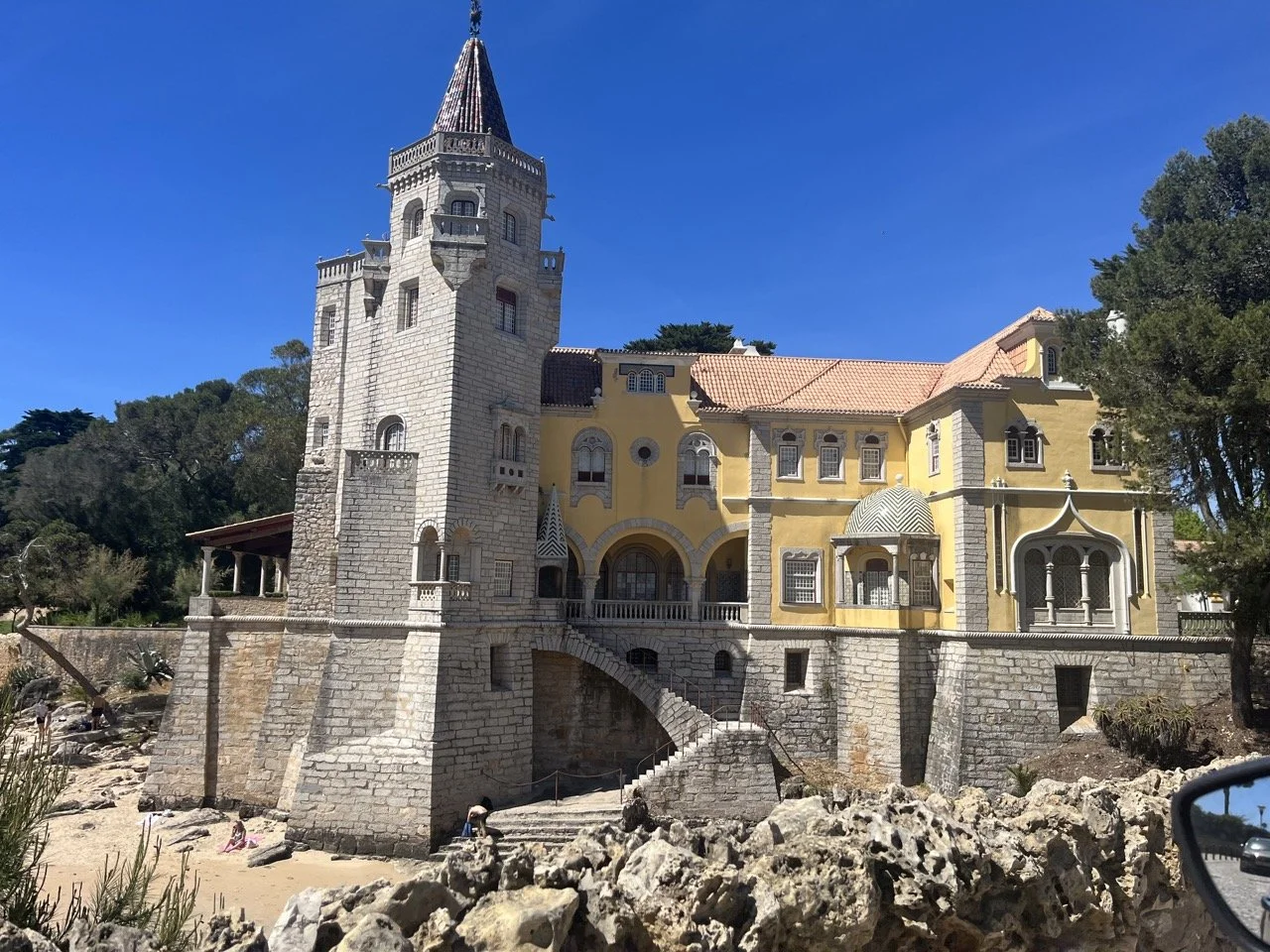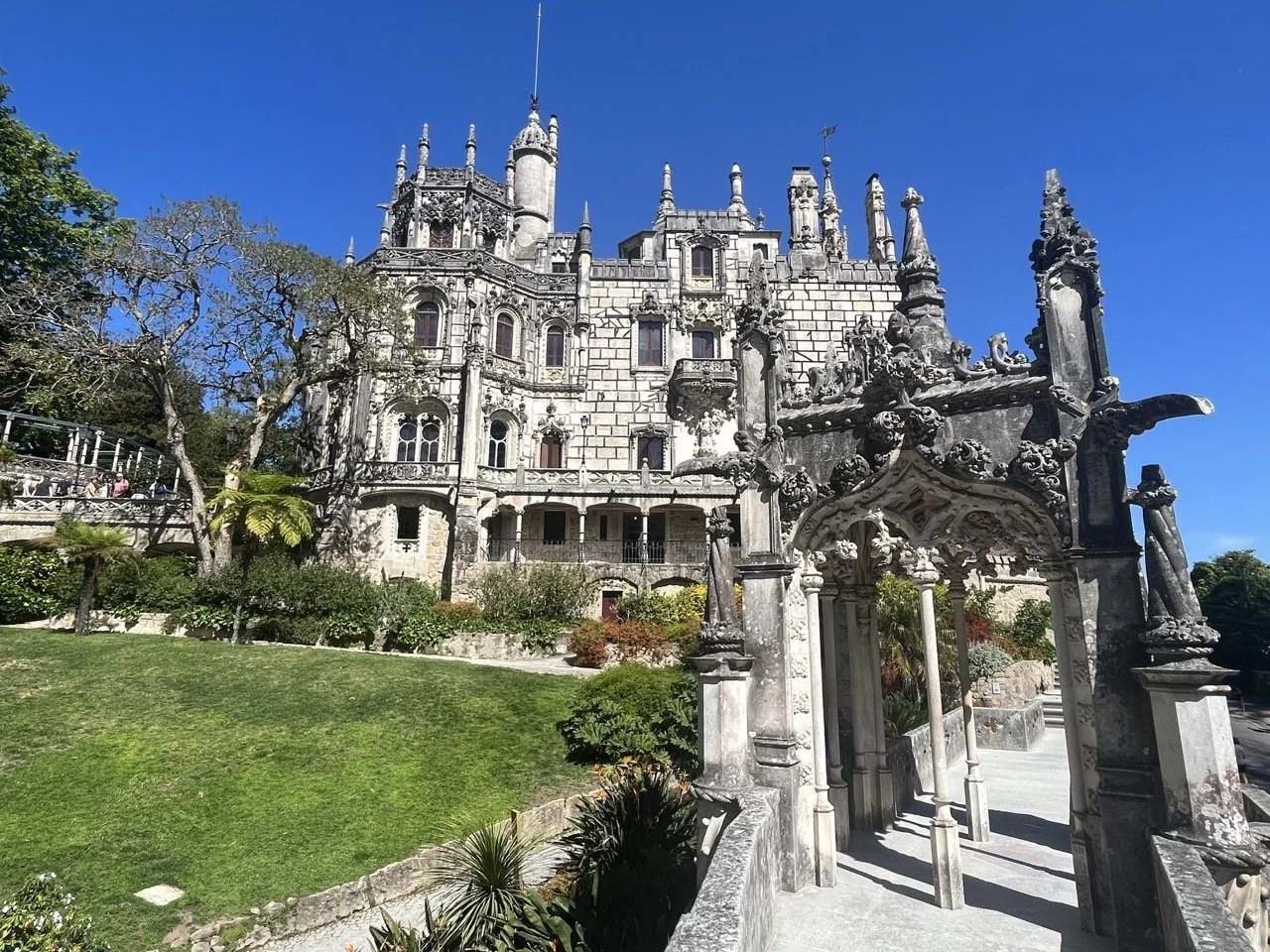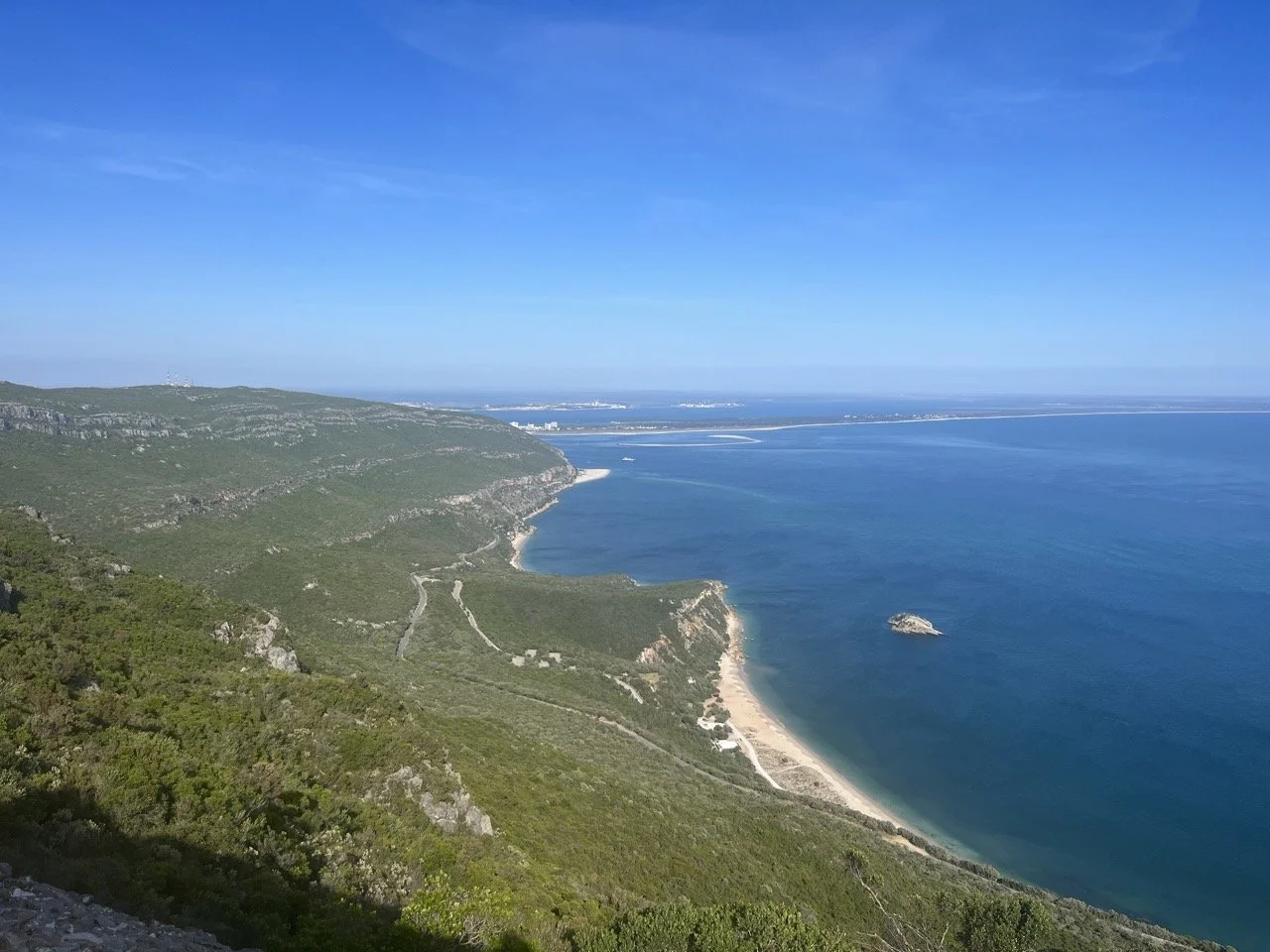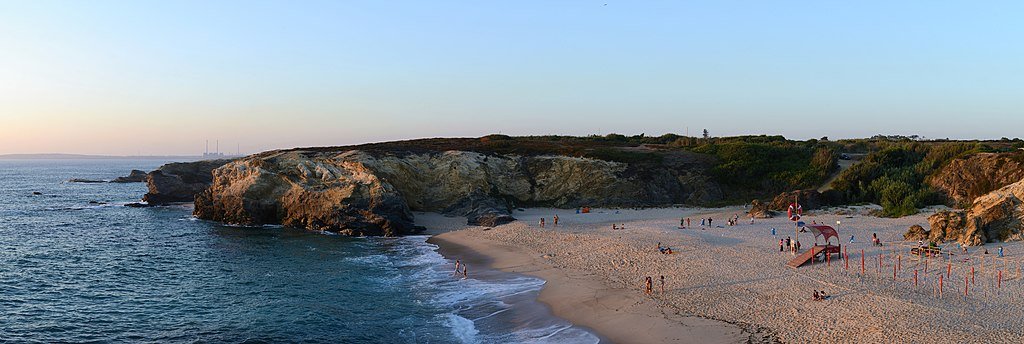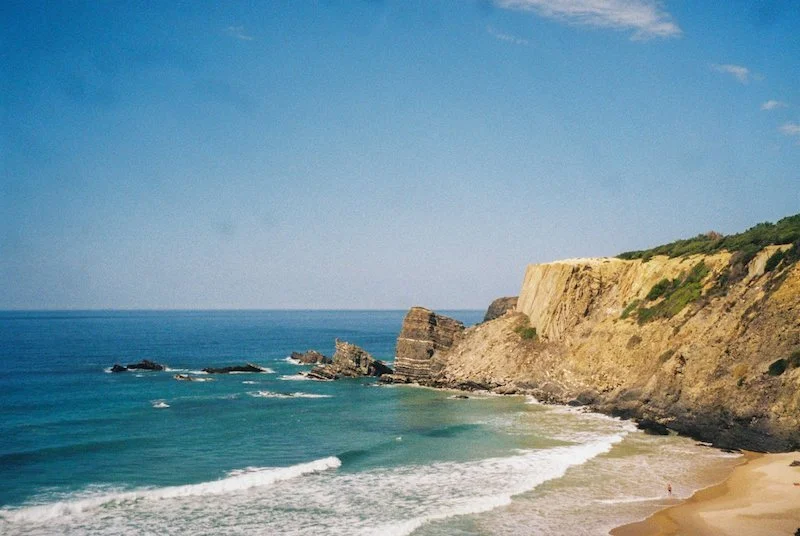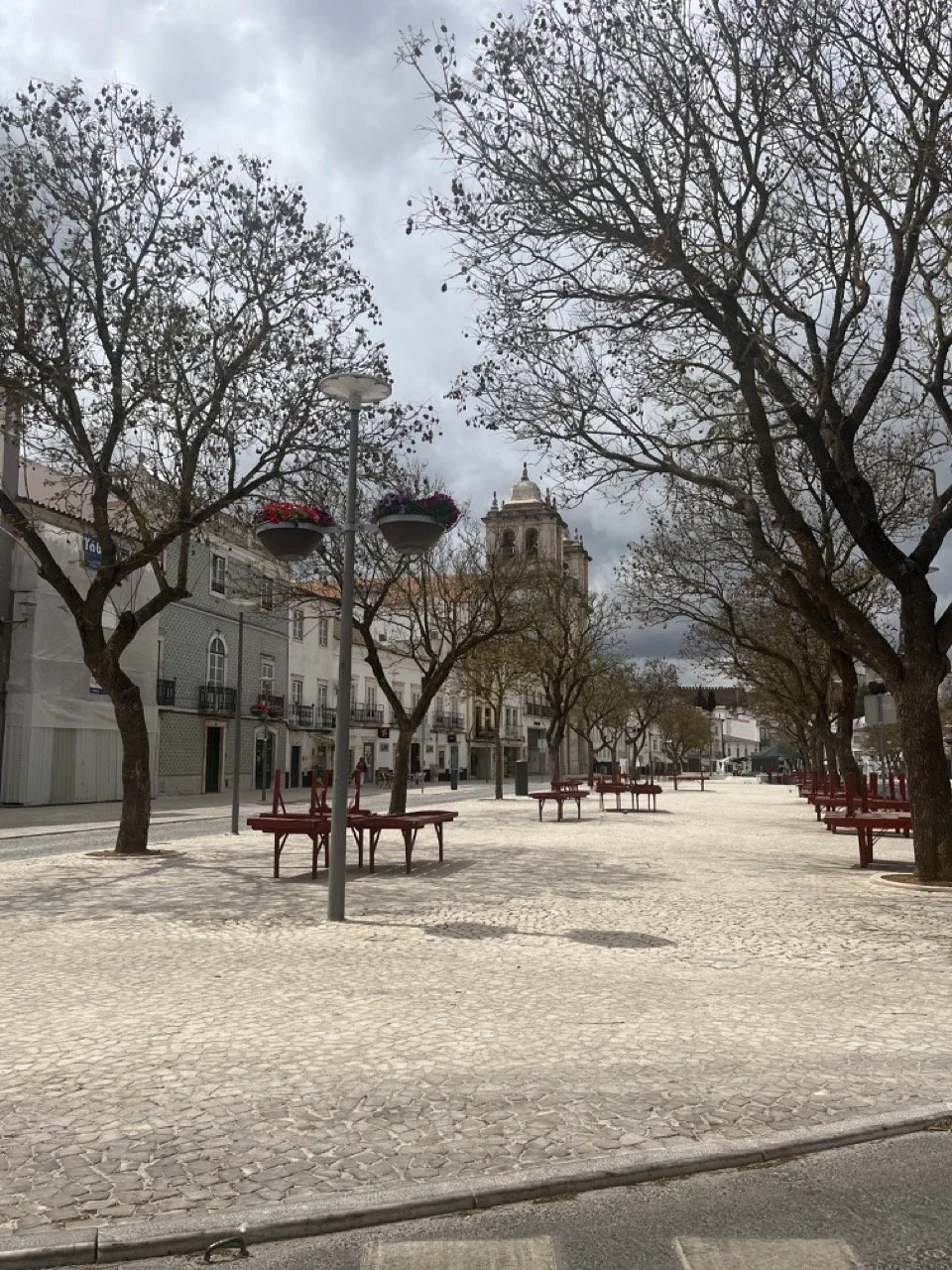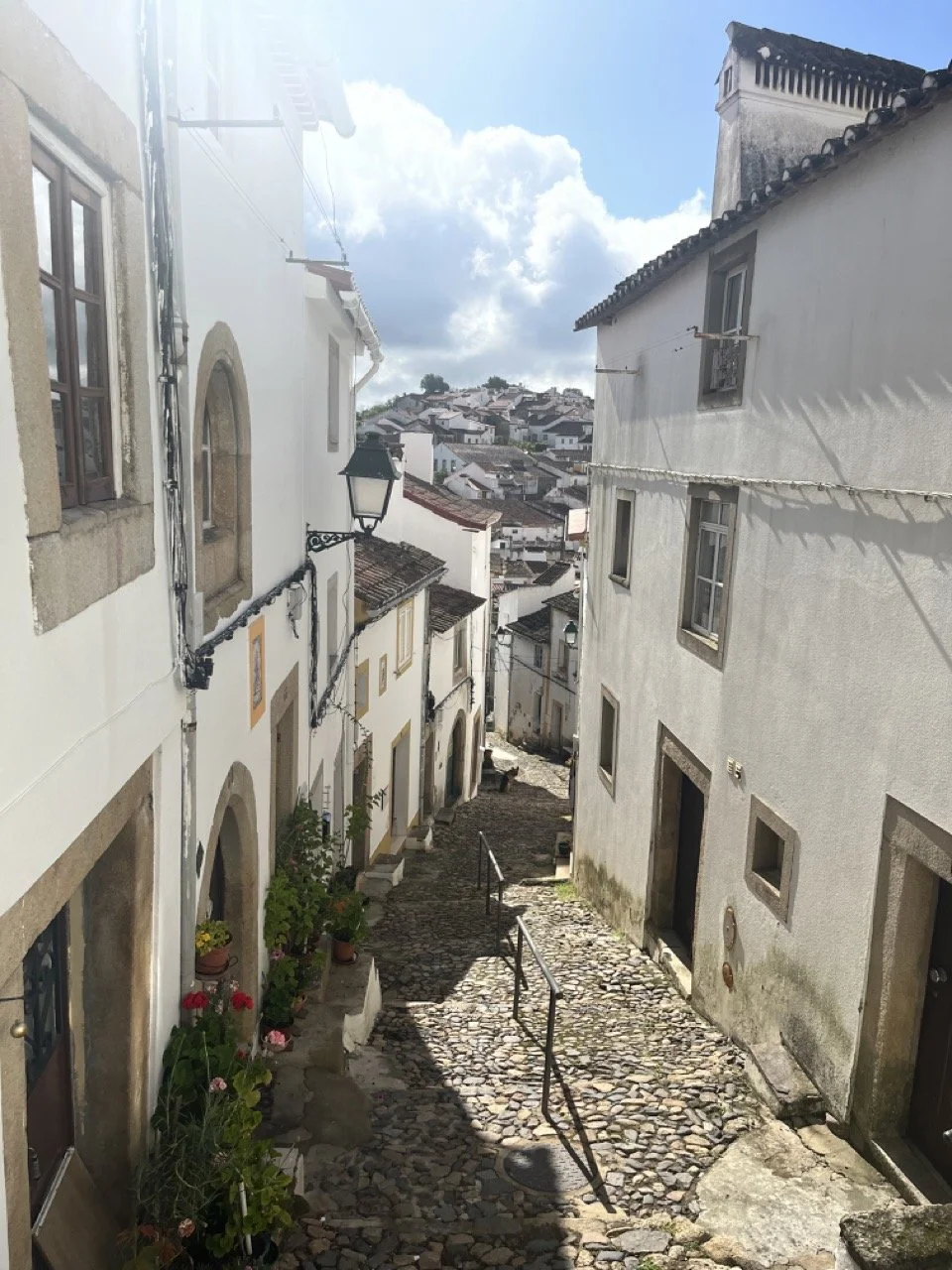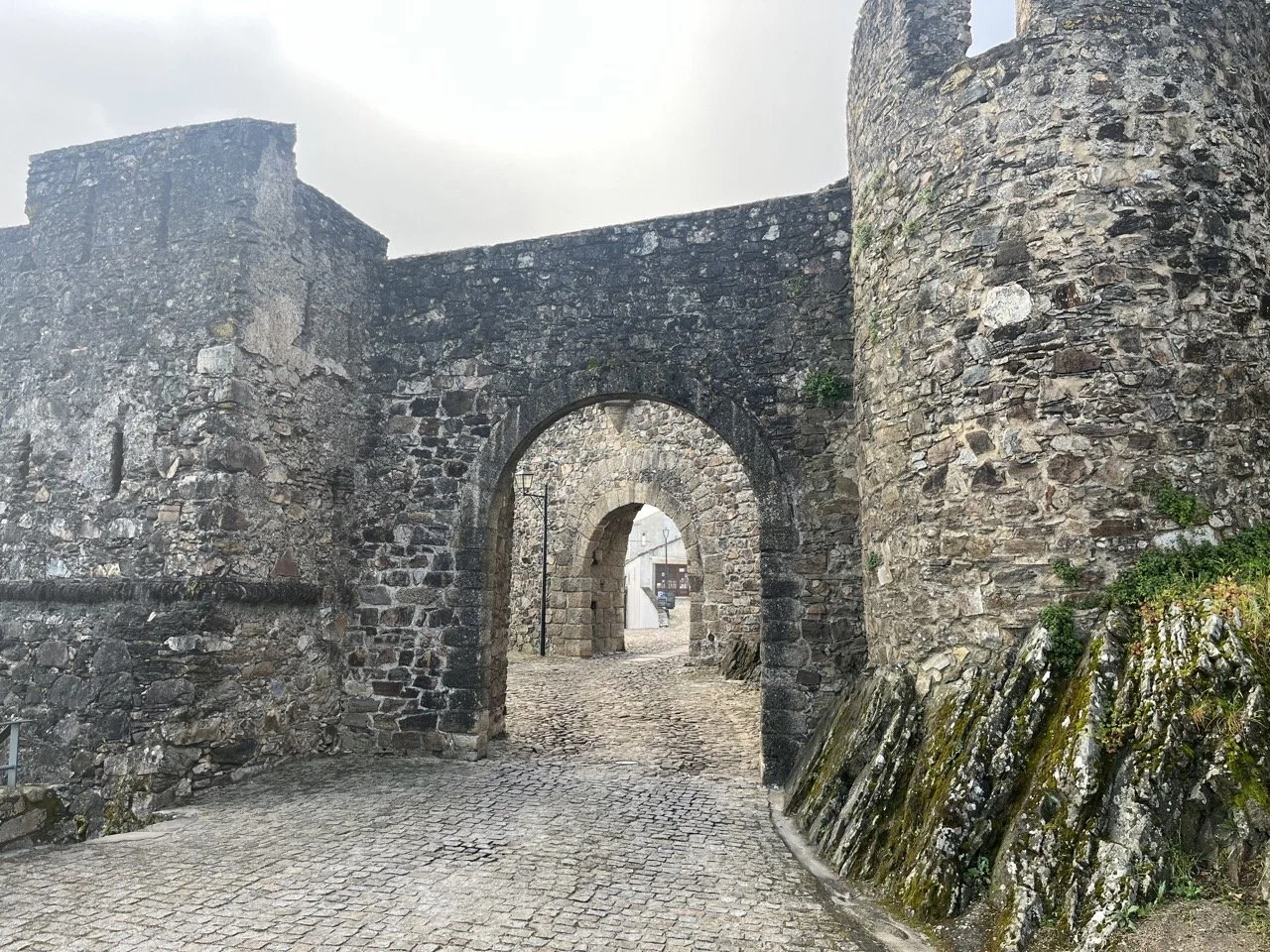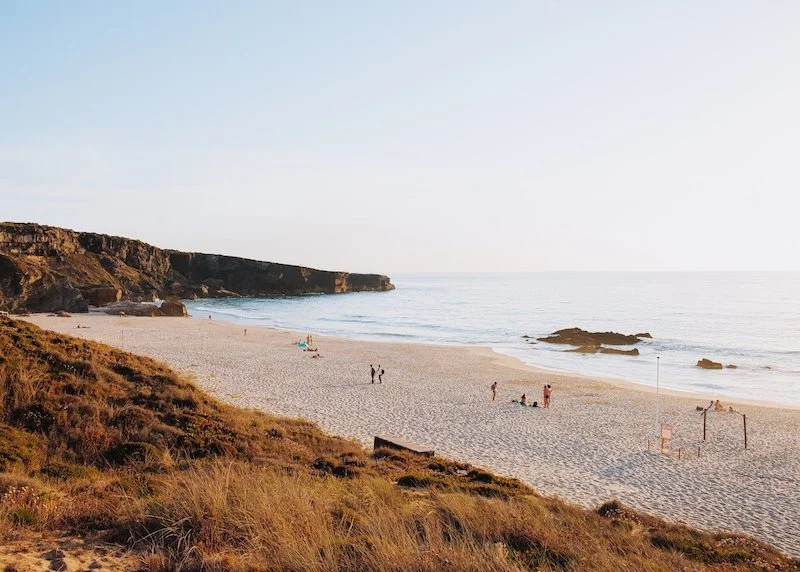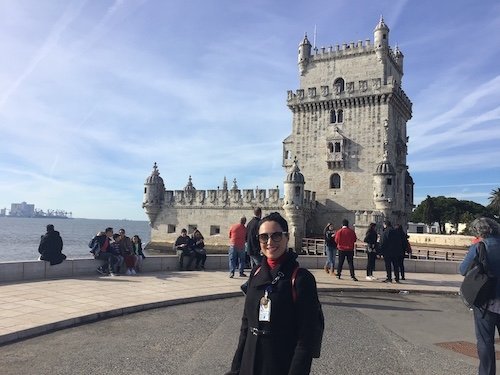40 of the Best Places to Visit in Portugal
Affiliate disclosure: some of the links in this article are affiliate links. If you book using one of them, we’ll earn a small commission. All of our info is free to read and free of ads, so we appreciate it!
Bem-vindos a Portugal!
If you’re planning a visit here, then you’ve no doubt already discovered that for a relatively small country of only 10,000,000 inhabitants, Portugal boasts an extremely impressive diversity of landscapes, culture, and history.
While the country’s borders have been largely unchanged since they were defined by the Treaty of Alcañices in 1297, Portugal has been fought over and ruled by different empires dating back to Roman times (and before), so our history is quite complex.
Ruled by Rome until the 5th century, then Germanic tribes for a few hundred years, and the Moors from the 8th to 13th century, you’ll find traces of all of these civilizations when traveling through Portugal. Add in the geographic diversity and the huge variation in landscapes, and you’ll soon realize that you could easily spend a month here and barely scratch the surface.
To help you put together your sightseeing plan and decide where to visit, I’ve organized this guide to the best places in Portugal according to it’s 5 mainland regions. For each, I give a brief introduction, followed by a list of some of my favorite cities, towns, and attractions to visit in each of them.
This list is by no means comprehensive, and there are countless more wonderful places to explore in Portugal, but these are some of my favorite destinations and I think they deserve to be included in any and every visitor’s itinerary!
Table of Contents
Best time to visit
How long to spend
Transportation and how to get around
40 best places to visit
Where to go in Northern Portugal
Where to go in Central Portugal
Where to go in the Lisbon Region
Where to go in the Alentejo
Where to go in the Algarve
More Portugal travel info
Plan your itinerary with local help
If could use some help planning your itinerary, schedule a Portugal travel consultation with Ana Sofia, our Lisbon-based Local Expert.
These are one-hour Zoom calls where you’ll get to chat with Ana about the trip you’re planning and she’ll share her tips and advice, answer your travel questions, and help you perfect your itinerary.
Best time to visit Portugal
The best time to visit Portugal is in shoulder season - spring or fall.
May and October are the perfect months as you usually get fabulous weather (warm enough for swimming, but not stiflingly hot), but without the packed summer crowds.
Even so, don’t expect to be the only traveler no matter when you come; Portugal is becoming increasingly popular and visitor numbers are exploding. With comparatively mild weather year round, Portugal is a popular destination in every season, winter included.
While March and April offer better prices than May and fewer crowds, the risk of bad weather, especially up north, is much higher. March is still cold and can be very rainy. In late April, you might get some days warm enough for swimming, but you also might get rained on. And you’ll certainly need to bring a sweater for the nighttime.
The summer is of course a fine time to visit, but it can get hot, prices go through the roof, and everywhere will be crowded. If you don’t mind long lines, packed beaches, and breaking a sweat, don’t let that hold you back though!
How long to spend in Portugal
To experience Portugal, you really need at least a week.
If you want to see the entire country, 10 days is doable, but 14 is much better. While Portugal is small and public transportation is good, there’s a lot to see. Trying to cram a countrywide tour into 7-10 days will ultimately mean as much time driving as sightseeing.
In one week you could reasonably expect to visit Lisbon, Sintra, somewhere on the central coast, and Porto and the Douro valley up north. Alternatively, you could visit Lisbon and the Algarve, with a quick stop off in the Alentejo.
Some visitors do a variant of Porto-Lisbon-Algarve in a week-long visit and while this does let you see Portugal’s 3 most-visited destinations, you’ll find yourself constantly rushing and you won’t actually wind up seeing much at all. But it is doable if you plan well or hire a guide to maximize your driving days when going from Porto to Lisbon and Lisbon to the Algarve.
If you have 5 days, you should plan on just visiting two different destinations with a possible day trip: Lisbon, Sintra, and Porto for example or Lisbon and the Algarve.
With fewer than 5 days, just pick one area and plan on some day trips.
How to get around Portugal
Public transport
Portugal has good public transport and you can take a trip here without ever renting a car.
You have major airports in Faro (Algarve), Lisbon (central Portugal), and Porto (Northern Portugal), and flights from one part of the country to the other usually cost 50-100 euros. Additionally, you have a good rail network, with high-speed trains that connect all major cities and even smaller ones. For places that the train doesn’t cover, you almost always have both long haul and local buses that can get you there.
The national airline of Portugal is TAP Air, but some domestic routes are also run by Ryanair.
Trains are operated by the state, under the name Comboios de Portugal.
For longer bus journeys, your main two options will usually be Rede Expressos and Flixbus. For local bus routes, companies change depending on the region, so you’ll have to check.
Where to buy train and bus tickets
In general, I recommend booking your public transport tickets directly with the service provider. That said, sometimes it’s easier to compare all your options by using an aggregator.
Omio is an aggregator I like that shows options for public transport routes all over the world. When you do a search, you’ll be able to see all your options for trains, buses, flights, and even ferries along with a host of different companies that provide the services.
Driving/renting a car
For trips of more than one week, renting a car is the best way to get around Portugal. While public transport can get you most places, it doesn’t go everywhere and you’ll lose a lot of time in transit. Having the car gives you the freedom to go where you wish, when you wish, and to make stops at interesting points all along the way.
The highway system in Portugal is excellent and even secondary roads are usually in very good shape. Gas stations and rest stops are frequent and signage on roadways is clear.
Apps like Google Maps and Waze work very well and tolls can all be paid electronically through the Via Verde system which is provided to all drivers mandatorily with car rentals. If you’re planning to rent a car, you should have no trouble at all.
Prices for car rentals are also very reasonable. Even international companies like Hertz, Avis, and Europcar can have cars for as little as 20 euros a day. Smaller local companies almost always offer even better rates.
Where to find a car rental
In Portugal, you'll find all of the big international car rental companies. The most popular are Europcar, Avis, Sixt and Hertz. However, you also have plenty of local providers.
You’ll find rental agencies in all decent-sized cities, airports, and busy train and bus stations. You’ll also sometimes find them in smaller towns that are popular with tourists.
To check prices and book, I recommend using DiscoverCars, a car rental website that includes offerings from all the major international rental companies as well as lots of smaller local agencies, which often have much better pricing. You can often find great deals.
Taxis and Ride share apps
Ride share apps, like Uber, are widespread in Portugal and very cheap compared to other places. Although Uber is widely used in Portugal, the app Bolt is even more common (and usually a little cheaper).
To give you an idea of cost, think that a 15 minute ride will cost you around 4-5 euro. Getting from Lisbon’s airport to the central Baixa or Chiado areas will cost you about 10 euro. It’s surprisingly cheap.
Taxis are also always available and still circulate on the streets, so you can actually hail a cab. While more expensive than an Uber or Bolt, they’re also reasonably priced when compared to other countries.
Private drivers
For those who have the budget, private drivers are available to take you everywhere that you could want to go. Rates are also pretty reasonable, especially compared with what you’d pay in Northern Europe or in North America.
Figure that a full-day with a driver/guide will cost you 350-600 euros. Many drivers are also licensed guides, so if you’re traveling longer distances, you can make the journey (and cost) more worthwhile by turning a standard transfer into a half-day or full-day tour.
For great licensed guides who also drive, check out Ana Sofia and Inês Valencia.


Where to go in Northern Portugal
Northern Portugal is quite distinct from the rest of Portugal. It’s greener, colder, rainier, and even mountainous. It’s also in many ways the birthplace of modern Portugal, and it’s filled with historic and important cities.
Up in the north you have bustling and lovely Porto, medieval Guimarães, bustling Braga, the little-visited Minho Valley, the lush greenery of Peneda-Geres park, and the jaw-dropping panoramas of the Douro Valley.
Unknown to most international tourists, there are also beautiful beaches along the northern Green Coast (Costa Verde).
Check out our Guide to Northern Portugal, for even more info on the region.
1. Minho Province & Peneda-Gerês National Park
In the far northwest of Portugal, the province of Minho is the wettest in the country, and is particularly verdant, with a more temperate climate than you’ll find anywhere else.
The center of the province is made up of small towns and lovely countryside dotted with quintas, large country manors built back when this was the home of the country’s wealthy nobility.
Running along the west coast of the province and stretching northall the way to the Spanish border, you have the dramatic and entirely unspoiled, dune-filled beaches of the Costa Verde (green coast).
A bit to the east lies the stunning Parque Nacional da Peneda-Gerês, which is Portugal’s only national park, and one of the few parts of the country that is characterized by an Atlantic, rather than dry Mediterranean climate. The nature and hiking within the park is fantastic. Nearby, you’ll also find plenty of vineyards producing delicious, bright Vinho Verde wines.
2. Braga, Guimarães, and Viana do Castelo
Central Braga at dusk
A square in Guimarães
Most tourists just associate Braga with The Sanctuary of Bom Jesus, which is a fabulous place to visit. But there’s more to see!
The Braga Cathedral, Aalso known as Sé de Braga, is a must-visit monument for history buffs. Built around 45 AD, the monument is so old that it gave creation to the local expression "Older than the Sé de Braga" (which you use when referring to something that's very, very old).
In recent years, Braga has been deeply changed by the arrival of thousands of Brazilian immigrants, who have revamped the city's vibe. It’s a fun place to visit.
Guimarães has arguably one of the cutest historic centers in all of Portugal and is filled with beautiful monuments such as the Guimarães Castle (the place where Portugal was born). The Largo da Oliveira is perfect for enjoying a nice lunch or having a cold beer at night.
And even though Guimarães derives its charm from its centuries-old building, the city has plenty of modern cultural attractions. One of the best? The elegant Vila Flor Cultural Center, where you can experience some well-curated live music.
Viana do Castelo is - in my opinion - where you'll find the best Northern Portugal beaches. Yes, they can be windy, but don't let that take anything away from the experience.
My top recommendations are the Afife beach (in which sometimes you can swim in a shallow river that meets the sea right at the sand) and the Vila Praia de Âncora beach, which is a little busier but surrounded by many fine (and mostly cheap) local-dining restaurants.
3. Bragança
Bragança with it’s impressive walled castle
In the far northeast of the region, on the border with Spain, the medieval town of Bragança makes for an excellent visit as well. The 12th century walled castle complex is the highlight attraction, but the town is pleasant to explore in its own right. The city is in the heart of the area called “Tras-os-Montes”, which means “behind the mountains”, and this is perhaps the most remote part of Portugal.
4. Parque Natural de Montesinho
Photo: Elisha.wolf, CC BY-SA 4.0, via Wikimedia Commons
Very much isolated from most of the country, the surrounding area offers a glimpse of Portugal’s past, with little villages largely untouched by modern development. And heading into the Parque Natural de Montesinho, you’ll find pristine nature filled with wildlife and near-deserted hiking trails.
5. Porto
Of course, I haven’t even addressed the star attraction of northern Portugal yet: Porto. Portugal’s second city, Porto is renowned for its rich cultural heritage, Baroque and Gothic architecture, cultural offerings, and vibrant, contemporary nightlife.
You should plan to spend at least a few days in Porto, as this will give you time to actually explore and experience the city rather than just running through the highlights.
For more comprehensive information on Porto, check out our Porto city guide.
6. Douro Valley
Heading south from Porto, the Douro Valley is probably the second most-visited destination in this region. Known best for its cultivation of Port grapes, most visitors come to spend a day exploring the vineyards, going for a scenic boat road, and wandering in the beautiful countryside.
The views are extraordinary and there are many excellent boutique hotels throughout the valley, so a stay overnight is a great option.
Where to go in Central Portugal
Central Portugal as a region basically stretches south from the city of Aveiro down to just outside the Lisbon metro area. Here, you’ll find medieval cities like Coimbra, charming towns and fishing villages like Óbidos and Nazaré, wild Atlantic beaches, and the alpine-like forests of the Serra da Estrela mountains.
If you’ll have a car, this area is a delight to road trip through, and you’ll enjoy spending quiet evenings in cities and towns that other tourists have almost entirely disappeared from at the end of each day.
7. Aveiro
In the north of the region, Aveiro is an extremely picturesque city of 80,000 people right on the Ria de Aveiro lagoon. The city has an intricate network of canals running through it, which have given it it’s nickname as the “Venice of Portugal”.
Colorful Moliceiro boats, originally used to harvest seaweed, now offer scenic tours of the canals. Come for the canals but stay for the city itself!
8. Alcobaça & Batalha
Alcobaça
Batalha
If you’re interested in religious tourism, the towns of Alcobaça and Batalha offer incredible Gothic monasteries. The towns themselves don’t have much of interest to the casual visitor, but the monasteries are truly stunning and are entirely worth the journey to get to them.
They can easily be visited as part of a combined day trip as they’re only a short drive from one another and are close to various other cities and towns in the region.
9. Tomár
The pretty riverside town of Tomár is famous as the ancient home of the Knights Templar, but it also has a fair deal more to offer. The town has a gorgeous historic center, and in addition to its famous Convento de Cristo, has a well-preserved 12th century castle and many scenic squares and winding streets to meander through.
On sunny days, going for a leisurely walk along the riverfront is the perfect way to unwind and soak in small-town Portugal.
10. Fátima
Just a short drive from Tomár, the small town of Fátima is one of Christianity’s great pilgrimage sights, welcoming anywhere from 6 to 8 million visitors annually. Here, you can visit the majestic Basílica de Nossa Senhora do Rosário, which holds the tombs of the three children who were said to witness the apparition of Mary in 1917.
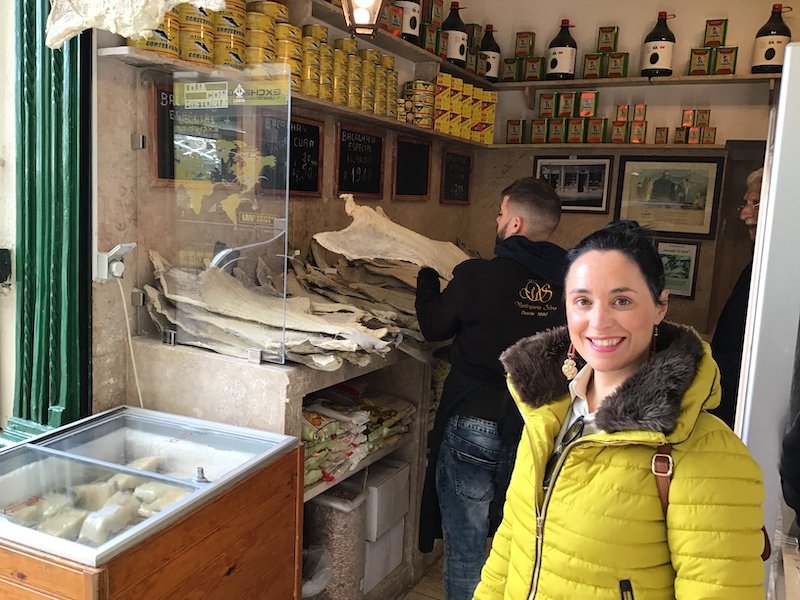
Connect with Ana, our Lisbon-based local expert, for help perfecting your itinerary, answers to all your travel questions, and fabulous local tips!
11. Óbidos
For medieval architecture lovers, the fully walled hilltop town of Óbidos is one of the prettiest in all of Portugal. The town is extremely well preserved, and while you wander along its narrow cobbled streets lined with historic, white-washed buildings, you’ll feel as if you’ve gone centuries back in time.
The town’s 12th century castle is particularly impressive, and setting out from there to walk along the fortified city walls will likely be the highlight of your visit.
12. Leiria
Moving toward the coast from Tomár, the city of Leiria, built along a series of hills, is another gorgeous town. Its impressive 14th century castle, perched atop the highest hill, is visible at all times and affords fantastic views over the surrounding area. Just to the west of the city lies the Pinhal Real (Royal Forest) pine forest, which is a delight to explore.
13. Coimbra
For a bigger city experience, Coimbra is a great place to spend a few days in Central Portugal. This is a historic riverside city that served as Portugal’s medieval capital for a period of time. It’s now a busy university town, as the home of the Univeristy of Coimbra, which was established in the 13th century and is considered to have one of the most beautiful campuses in the world.
There’s a large student population here, which gives it a youthful, energetic atmosphere, which contrasts interestingly with the medieval architecture and narrow, winding cobblestone streets.
14. Nazaré & Peniche
The beach in Nazaré
The Peniche waterfront. Photo: Vitor Oliveira from Torres Vedras, PORTUGAL, CC BY-SA 2.0, via Wikimedia Commons. Cropped from original
Of course, the coast is never far away when you’re in Portugal, and no matter what region you’re in, you’ll have to make your way to the seaside. In Central Portugal, the fishing villages of Peniche and Nazaré are two of the best coastal towns to visit.
Nazaré has become a real tourist hotspot, owing to its fame as an extreme surfing destination. Be sure to check out the huge waves that break on its Praia do Norte beach.
For more casual beachgoers, the nearby Praia de Nazaré beach has 7 kilometers of golden sand and tranquil waters perfect for swimming. The cliffside Nossa Senhora da Nazaré monastery is also very much worth a visit.
While Nazaré has transformed from a working fishing village into a tourist destination, Peniche is still very much an active fisherman’s town. The town itself is short on touristic sights, but curious travelers will enjoy the experience of being in a truly authentic working-class town.
Both of them are 100% worth visiting.
15. Berlengas islands
The Fortress of St. John the Baptis, on the Berlengas Islands
From Peniche, a regular ferry runs to the nearby Berlengas islands, which are a fantastic place to spend a few hours exploring. You can visit the bigger of the two islands, where you can pass the time exploring the Fort of Saint John the Baptist, visiting the little village and its beach, or taking a small boat trip around the coves and rocky outlets that dot the island’s shore.
16. Serra da Estrela
Heading far into the east of the region is the Serra da Estrela mountain range, where you’ll find Portugal’s tallest peaks. Few visitors to Portugal stray far from the coast, so if you make it here, expect little in the way of crowds.
This is the largest protected natural area in Portugal, and the landscape is made up of dramatic peaks, alpine-like forests, rivers, lagoons, and uninterrupted nature.
If you come during the colder times of year, the peaks will likely have snow, and you may even have a chance to test out Portugal’s sole ski resort!
Where to go in the Lisbon area
The Lisbon region is the smallest of Portugal’s five regions, but 1/4 of the population lives here, so there’s tons to see and do.
Lisbon is the star attraction, but there are also lovely forests and nature in the Serra de Sintra, excellent beaches and resort towns along the Portuguese Riviera, wine country, and castles and palaces galore in Sintra.
The south of the region is a bit more rural, and in just one day you can sample local agricultural products while visiting historic mansions, fishing villages, and excellent beaches.
17. Lisbon
Lisbon needs no introduction! This gorgeous town of half a million, built over 7 rolling hills right at the mouth of the Tagus river (Rio Tejo in Portuguese), is Portugal’s capital and largest city. It’s a fascinating blend of historic and modern, although most of what you see now, even in the historic center, isn’t actually that old.
An earthquake in 1755 destroyed much of the original city, meaning that almost nothing is more than about 265 years old.
Lisbon’s charming squares, cobbled streets, and many viewpoints hide treasures that would take weeks to fully explore. From the tight medieval alleyways of the Alfama neighborhood to the elegant boulevards of Principe Real, this is a city that begs to be soaked up leisurely - you’ll definitely need at least a few days to experience it the right way.
While most visitors come for 2-3 days and then move on to other parts of Portugal, there are also countless possible day trips within about an hour of Lisbon. The Portuguese Royal Court was based here for centuries and the surrounding region is rich with palaces, medieval towns, parks, beach resorts, and monasteries. This means that for those who dread the idea of packing and unpacking, you can easily base yourself in the city for 5-7 days and never get bored.
For ideas on where to base yourself and neighborhoods to visit, take a look at our Lisbon neighborhood guide.
18. Cascais and Estoril
A mansion in Cascais
After Lisbon, the most popular places to visit here are unquestionably the summer resorts of Cascais and Estoril, and the castle and palace-filled town of Sintra. Cascais and Estoril, which are within walking distance of each other, were the summer residences of Portuguese royalty and nobility since the 1870’s.
While they are still the destination of choice for many wealthy Portuguese during the summer months, they’re also now frequented by Portuguese and visitors of all stripes, and are incredibly lively towns in the high season.
The two towns are situated on the northern edge of the the Portuguese riviera, and have lovely beaches with calm waters to the south, and wild, raw beaches to the north along the Serra de Sintra Coastline.
19. Sintra
The other most popular day-trip destination from Lisbon, Sintra is one of the prettiest towns in Portugal.
Tucked away in the forests and mountains of the Serra de Sintra, the town is brimming with an absurd number of palaces, castles, and extravagant villas. The main draws are the Palácio Nacional de Sintra, the Castelo dos Mouros, the Palácio Nacional de Pena, Quinta da Regaleira, and the Monserrate Palace.
The strikingly colored yellow and red Pena Palace is the highlight for most visitors and from its hilltop perch overlooking the town, it can even be seen from Lisbon on clear days.
Since the town is located within the Sintra-Cascais Nature Park, it also affords fantastic access to forests, mountains, and wide sandy beaches. In and around the park, you have the beautiful town of Azenhas do Mar whose whitewashed houses sit in a natural bowl on a cliff overlooking the sea, Cabo da Roca - the westernmost point in continental Europe, and a host of beautiful beaches like Praia do Guincho, Praia dos Maças, and Praia Grande.
20. Bucelas Wine Region
Grape vines in Bucelas. Photo: Paulo Juntas, CC BY-SA 3.0, via Wikimedia Commons. Cropped from original
And for wine lovers who don’t want to head all the way to Porto and the Douro Valley, the town of Bucelas is the perfect choice. Just 30 kilometers north of Lisbon, this historic town has been producing wine since the Roman times.
Lisbon’s recent urban sprawl has actually led to the decline of winemaking here, as the surrounding land has been sold off and repurposed for other uses, but there are still a number of excellent wineries that offer tours and tastings.
21. Parque Natural da Arrábida
For an escape into nature, the towering limestone cliffs and forests of the Parque Natural da Arrábida present the perfect respite from the city. Running along the Setúbal peninsula, the densely forested park is best known for its excellent hiking trails, imposing cliffs, and exquisite white sand beaches with calm turquoise waters.
Very few tourists make it here, which is shocking as this is one of the loveliest stretches of nature and coastline in the entire country.
22. Setúbal and Sesimbra
Setúbal
Sesimbra
In the south of the Lisbon Region, Setúbal, and Sesimbra are two fishing towns well worth visiting.
Setúbal is really much more of a city than a town, and it was and continues to be the center of commercial fishing in Portugal. It’s not the loveliest city and it certainly doesn’t cater to tourists, but it’s very authentic and it has some of the best and freshest seafood in all of Portugal.
Nearby, Sesimbra is a much quainter little village, with a seafront promenade, excellent city beach, and historic fort. Combining the two in one visit makes for an interesting comparison.
Where to go in the Alentejo
For visitors looking for a less-touristy side of Portugal, the Alentejo (whose existence most tourists barely even register) offers an opportunity to explore Portugal without the crowds.
Largely agricultural, this is the largest region in Portugal, and its interior is filled with farms, olive groves, vineyards, and forests of cork trees, as well as medieval walled cities and sleepy towns. The regional capital of Évora is the busiest town and makes a good base for exploring the wider area.
Along the Alentejo coast visitors will find some of the country’s best beaches, which are often nearly deserted even in high season.
For more info on visiting the Alentejo, check out our Alentejo travel guide.
23. Troia Peninsula
The most popular area in the Alentejo is undoubtedly the Troia Peninsula, which is just a short drive south of Lisbon and has long been a playground for Europe’s rich and famous. Troia has fantastic beaches and is easily reachable via a public ferry from Setúbal, so it’s also a popular day trip destination from Lisbon.
24. Porto Covo
Praia Grande, near Porto Covo. Photo: Alvesgaspar, CC BY-SA 4.0, via Wikimedia Commons. Cropped from original
Heading south a bit, Porto Covo is a pleasant little town with great beaches and lots of hiking. The coastal route of the Rota Vicentina hiking trail passes through here, and this section of the trail is especially popular for its beauty and excellent views.
25. Vila Nova de Milfontes
Photo: Francisco Santos (user: Xuaxo), CC BY-SA 3.0, via Wikimedia Commons. Cropped from original
Continuing down along the coast, you’ll reach Vila Nova de Milfontes, which sits perched atop a rocky outcrop overlooking the sea and Mira River. This is one of the prettier coastal towns and the view from it is outstanding. The town is surrounded by expansive white sand beaches and hidden coves perfect for exploring.
26. Almograve
Praia do Almograve. Photo: Vitor Oliveira from Torres Vedras, PORTUGAL, CC BY-SA 2.0, via Wikimedia Commons
Further south still, is the coastal town of Almograve. This is a popular weekend destination for Portuguese families, and the town beach does get quite crowded. It has good facilities (showers, beach rentals, restaurants, etc.) and is a wide expansive beach, so it’s an excellent choice for families.
As with every coastal town, there are plenty of other beaches in the area (mostly wide and sandy) which will have much smaller crowds, so if you have a car you’ll be able to pick whatever suits your style.
27. Zambujeira do Mar
Zambujeira do Mar is and has been a surfing destination for a while now, so the vibe in town is quite different from Almograve. The beaches around here are tucked away in small coves and backed by prominent cliffs, so are quite intimate. Head any further south from here and you’ll be in the Algarve!
28. Alentejo Wine Country (inland)
Heading inland from the coast, you’ll find yourself traveling through vast expanses of farmland, between your destinations. Cork production is a major industry here, and this region produces up to 50% of the world’s supply.
When driving through the Alentejo, the importance of this crop will be evident as your pass through huge forests of cork trees. If you’re a wine drinker, you have the Alentejo to thank for your wine stoppers! Speaking of wine, the region has also become one of Portugal’s major wine producers.
Although much less famous internationally than the Douro Valley, the wines produced here (predominately reds) are very popular with the domestic market and are known for their high quality.
The grapes used are often local varieties, so the wine has a distinct flavor. Many of the producers are local families, and they often offer tours and tastings at their estates, so you’ll frequently be able to stop and sample Alentejan wines.
29. Évora
With 50,000 residents, Évora is a lovely city that you could easily spend a few hours in, but which is best enjoyed by an overnight stay. Right in town, you can admire the Roman temple and aqueduct, Moorish city walls, fortified church, and Chapel of Bones (whose interior is “decorated” with human bones).
30. Estremoz
Estremoz, another pretty walled town is also worth a visit, especially if you can make it on a Saturday when the town holds its impressive weekly market. This is one of the Alentejo’s “marble towns”, as it’s near to the quarries and the buildings are primarily built of marble.
31. Castelo de Vide
Nearby Castelo de Vide, sitting in the foothills of the Serra de São Mamede is an incredibly well-preserved medieval town filled with whitewashed buildings. Both of these towns are in the Serra de Sao Mamede park, so if you’re looking for an escape into nature, this is a beautiful area to explore.
As a mountainous area this is very distinct from the plains of the rest of the region, and it also sees significantly more precipitation so is much greener and more lush.
32. Marvão
In the far northeast of the region on the border with Spain, hilltop and fully walled Marvão offers spectacular views. The town’s castle is especially impressive, and its hard not to feel a bit awed as you stand there looking out at the seemingly never-ending expanse in front of you. The view alone is worth the trip.
33. Elvas
Photo: Dafema, CC BY-SA 3.0, via Wikimedia Commons. Cropped from original
Heading east from Évora all the way to the Spanish border, the town of Elvas is completely protected by extensive city walls. The winding narrow streets are a delight to explore and and the impressive Elvas Castle affords sweeping views into Spain and of the surrounding town.
With churches, forts, aqueducts, and other ruins aplenty, there’s no shortage of historical attractions to check out. If you’re traveling between Évora and Elvas, be sure to stop at the Castle of Évoramonte along the way.

Ana Sofia has answers!
Stop wasting time and connect with Ana in Lisbon for the best local info and help planning a better trip to Portugal!
Where to go in the Algarve
All the way in the very south, we have our beach mecca: the Algarve. Millions of visitors come here every year to lounge on white sand beaches backed by jaw dropping cliffs and coves, and to enjoy resort-style amenities like golf courses, tennis centers, spas, and fine-dining restaurants.
Some of the coastal portions of the southern Algarve, especially around Lagos, Albufeira, and Faro, are heavily developed and have certainly succumbed to overtourism. Nonetheless, there are still countless small towns, natural areas, and beaches which are unspoiled and a delight to discover.
Have a look at our Algarve travel guide for more info on the region.
34. The Costa Vicentina
One of the many lovely beaches along the Costa Vicentina
In the far northwest corner of the Algarve, the Costa Vicentina offers spectacular scenery and exquisite beaches, stretching all the way north into the Alentejo. This area is popular for surfers and the waters can be rough with strong currents, so it’s important to be careful when swimming.
Most of this coast is part of a protected area, falling within the Parque Natural do Sudoeste Alentejano e Costa Vicentina, so it’s refreshingly free of development and also has excellent hiking opportunities.
Beaches and nature should be the focus of your visit here, but there are also some nice towns to base yourself in or to make short stops at during a road trip. In the far north of the region, Odeceixe is a pleasant little town that makes a good base for visiting the nearby Praia de Odeceixe and Praia das Adegas.
35. Aljezur
Further south, you’ll reach the riverside town of Aljezur, which boasts a 10th century hilltop castle. There’s not much to see in town, but nearby are the seaside villages and beaches of Monte Clérigo and Arrifana. Both beaches are absolutely spectacular.
There are plenty of other little towns and beaches to visit as you head south on your way to Lagos and beyond.
36. Lagos
The Ponta da Piedade cliffs, just outside of Lagos
Returning to the southern coast, the historic city of Lagos is well worth visiting. Not nearly as developed or over-touristed as other destinations along the central Algarve, Lagos has a lovely historic center to explore, many good restaurants, and beautiful coastline and beaches.
The Praia de Dona Ana beach is especially impressive, nestled below and surrounded by cliffs dropping straight into the ocean. A few kilometers south of Lagos, the Ponta da Piedade is a rocky area of cliffs, coves, and seaside arches, which is the perfect area to explore on a boat trip.
37. Silves
Photo: Lacobrigo, CC BY-SA 3.0, via Wikimedia Commons. Cropped from original
Heading east and a bit inland, the former capital of the Algarve, Silves, is a great place to visit if you’re looking to mix in some culture and sightseeing with days on the beach.
Silves was an important town during Moorish rule, which is evident when you see its impressive castle and the heavily fortified entrance to the town. One very nice way to visit here is by taking a river cruise from Portimão along the Arade River up to Silves.
38. Portimão
Portimão is a historic fishing town dating back to pre-Roman times, but the town was largely destroyed in an earthquake in the 1700’s, so little of its historic buildings remain. It’s also now a stop on many cruise ships’ itineraries, so it gets packed during the day as day trippers head into the city or nearby areas.
The riverfront area is a pleasant place to spend an hour or two though, and it makes sense to stop here if you’re heading east from Lagos or the western coast.
39. Reserva Natural da Ria Formosa
Photo: Ricardo Oliveira, CC BY-SA 3.0, via Wikimedia Commons
Once past Faro, the territory between there and the Spanish border is very different from and far less developed than the central Algarve. The expansive Reserva Natural da Ria Formosa is a protected reserve that covers a huge swath of the eastern Algarve and has severly restricted the opportunity for development.
Within the reserve are barrier islands whose fantastic sandy beaches can only be reached by boat and are therefore comparatively uncrowded.
Frequent boat tours depart from many of the towns in the area (Faro, Olhao, Fusesta, Cabanas, etc.), so you can use any of them as a base if a few days on these relatively secluded beaches sounds appealing to you.
40. Tavira
And for a less-visited destination that offers a bit of everything: culture, a historic town, restaurants and cafés, and excellent nearby beaches, Tavira is a good option as a base for a few days. From here, you’re also only 75 kilometers from Huelva in Spain!



Connect with Ana Sofia
